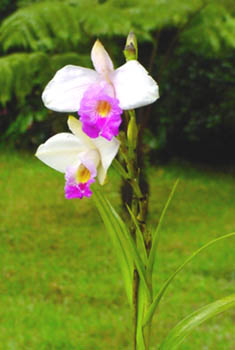
One of the many interesting exhibits at the California Academy of Science is the Living Roof exhibit. It is a 197,000 square foot (43,560 sf = 1 acre) area of undulating landscape, blanketed by 40 different species of California native perennials and annual wildflowers. The palette of plants that make up this beautiful rooftop design include such specimens as the California Poppy, Goldfield, Miniature Lupine, Beach Strawberry, Sea Pink and Stonecrop.

The Living Roof provides more than just a beautiful display of California natives. The roof also insulates the building itself, keeping the inside temperature 10 degrees cooler than it would be with a standard roof. The variety of plant life also serves as a habitat to local wildlife, especially for birds and insects. Another interesting aspect of the roof is that when it rains it absorbs a lot of water that would otherwise be run off, ending up in storm drains, which direct water back out to the ocean. There is a percentage of water that does not stay in the roof and that is collected by a drainage system that directs water into a cistern that filters the water before releasing it into the city storm drain system. The drainage system is also part of the erosion control system for the landscape. There is a grid of gabion baskets (rock retained in wire baskets), which serve as a path to drain inlets for excess water runoff. The gabion system also provides a type of retaining structure to help keep the soil (especially on the undulating slopes) from shifting. I thought that was a neat solution to a potential problem and I liked how it provided more than one purpose.

You might be wondering how it is constructed, since it is an entire roof of soil and plants. You're probably wondering how the roof can hold so much heavy soil. Below is a picture of the layers of the roof. As you can see the first layer is plant material, which was seeded under the cocomatting, which is the second straw like layer you see. The matting is used to prevent erosion until the plants themselves fill out. The third layer is soil, which is probably not very deep. The next layer consists of a plastic sheeting of reservoirs, which hold excess water for the plants. The layer below the reservoirs is filter fabric to keep the soil particles from leaving and clogging up the drainage system. The white layer that you can see fairly well is styrofoam. It's light weight and displaces volume that could otherwise be too heavy for the roof structures weight capacity. These are the main layers that make up the design. Of course there is a layer similar to your typical roof shingle found on a house, beneath all these layers, as extra protection.

There are skylights that penetrate the roof, which provide light to the exhibits within the building, such as the rainforest. These also allow ventilation. In the picture below you can see the observation deck. The views from the roof were pretty good. It was unfortunate that it was raining so much at the time when I went outside for a look at the living roof. The best time to see this roof would likely be in the warmer seasons when the flowers are blooming.

If you plan on going to the California Academy of Science to see the Living Roof and the other fantastic exhibits, be prepared to pay $30 an adult, unless you have a student ID or just purchase student tickets which are $25 each. We ended up not taking our daughter who is 10 months old, since they do not allow any children under the age of 3 into the planeterium. If you have small children you might want to consider whether to go with them or without, otherwise all the other exhibits were great for all ages. It was worth the money spent and I recommend eating before or after your visit there, since the restaurant on site can be quite busy. I had a difficult time getting what I wanted to eat, because the lines were so disorganized and chaotic. Besides that the food is very good and about right for the price. If you want more information on the California Academy of Science or the Living Roof check out the following link:
http://www.calacademy.org/index.php.


















































